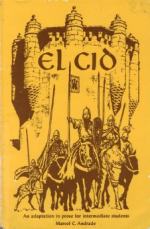|
This section contains 1,978 words (approx. 5 pages at 400 words per page) |

|
In the following excerpt, Burshatin examines the status of Moors as portrayed in the epic and the metaphoric and symbolic roles filled by Moorish characters in the work.
The image of the Moor in Spanish literature reveals a paradox at the heart of Christian and Castilian hegemony in the period between the conquest of Nasnd Granada in 1492 and the expulsion of the Moriscos by Philip III in 1609. Depictions fall between two extremes. On the "villifymg" side, Moors are hateful dogs, miserly, treacherous, lazy and overreaching. On the "idealizing" side, the men are noble, loyal, heroic, courtly—they even mirror the virtues that Christian knights aspire to while the women are endowed with singular beauty and discretion.
Anti-Muslim diatribes are fairly common and predictable: they are flat and repetitive in their assertion of Old Christian superiority over every aspect of the lives of Muslims or crypto-Muslims. Any...
|
This section contains 1,978 words (approx. 5 pages at 400 words per page) |

|




